If you’re considering using Skool to build your online community, here’s a comprehensive review to provide you with all the necessary information before making a decision on purchasing a monthly subscription.
Skool is a platform for creators to set up communities and run courses. Your decision to build a Tribe on Skool should be based on what is best for you and your business, considering all relevant factors rather than getting caught up in internet hype.
In this article, we will discuss the experience of running your own Skool group and being a member of someone else’s.
It is recommended to start promptly.

What is Skool?
Skool allows users to organize their course, community, and event schedules in a centralized platform.
By providing a comprehensive and user-friendly solution, it eliminates the necessity of using multiple tools like Kajabi or Teachable for course management and MightNetworks, Circle, or Facebook Groups for community management.
The platform was co-founded by Sam Ovens and was launched in 2019 with a closed beta. It has been publicly available since early 2022.
It is clear that with the continuous release of new features and a growing customer base, there is certainty.
Skool is making a permanent mark in the world!

Who is Skool for?
If you happen to be a:
- The individual is a business owner.
- The person is a coach/consultant.
- The person is an educator.
- The individual who developed the course.
- The person is a YouTuber.
And you would like to:
Create a community where people can come together without distractions or advertisements, allowing you to have full control over the content they view.
If you are interested, Then Skool.com could be a good fit for you.
We will analyze and evaluate the Skool platform in detail, allowing you to make a knowledgeable decision on whether it is the suitable choice for you.
The 4 main features of Skool
A Skool group typically includes four main features:
- There is a sense of community.
- The classroom is a designated space for learning and instruction.
- A calendar is a tool used to organize and track dates and events.
- Gamification is the use of game elements in non-game contexts.
Within the community, individuals can interact with each other through posts, likes, comments, and direct chat messages:
In the classroom, customers have the opportunity to learn through courses and training programs:
The calendar allows users to schedule various types of events, both online and offline, such as recurring calls, webinars, and meetups for individuals and their members:
Gamification is a system that assigns points to members based on the number of ‘likes” they receive on their posts and comments. As members accumulate points, they can level up and unlock rewards associated with each level, which helps increase engagement.
The leaderboards display the most active members and the rewards they receive for each level:
Feature #1 - The Community
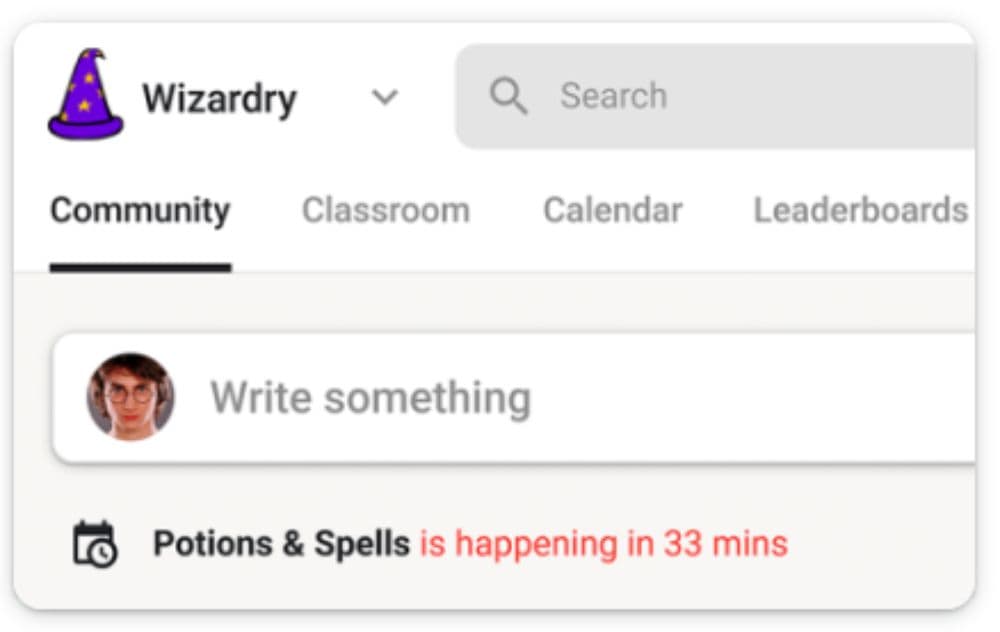
The community of a Skool group is structured as follows:
The interface is simple and allows you to perform two main functions:
- Please make a post.
- Please read and interact with posts from other members.
Later on, we will discuss the various types of posts that can be done in a Skool community.
Here is a screenshot of a typical Facebook group:
In a Facebook group, users can post and interact with other users’ posts, which may have a similar appearance.
However, on Facebook, there is always a lot of activity happening.
When visiting Facebook and navigating to your group, the experience can be compared to navigating through a busy shopping street.
There are always things or people competing for your attention.
When logging in to Skool, users are directed to a pleasant and welcoming interface.
Throughout the past year, my experience within a Skool community has been positive in both my capacity as a member and as an admin.
Posting in a Skool community
Both members and admins have the ability to post in a Skool community.
Users have the capability to upload different forms of content, including files, images, GIFs, and videos from platforms like YouTube, Vimeo, Loom, Wistia, or Bunny.net. Furthermore, they have the choice to conduct polls.
When posting something, it is done in a designated category.
This feature aids in the organization of posts, allowing members to conveniently view posts by category through the pill menu and utilize the filter button to quickly locate specific information.
As an administrator, you have the ability to customize categories to your preferences.
You have the ability to create specific categories where only administrators can post, and members can only view the posts.
User profiles, chat and notifications
Each community member possesses a public profile page:
On a profile page, you can access a range of information.
- The person’s community activity includes their posts, comments, and interactions with others.
- This person created or joined groups.
- The groups they belong to can be hidden at the group level.
When you follow someone, you receive notifications whenever they make a post.
Additionally, users have the option to engage in individual chats, as the group chat feature is currently unavailable.
Chats and notifications can be located in the top right corner of the screen:
Skool Community feature – In conclusion
Skool provides the essential components for creating a successful community:
Members are provided with a supportive environment that is free from distractions, allowing them to engage and connect with other members. Additionally, they can feel accountable and work towards a common goal, as well as receive specific rewards.
The chat feature allows members to privately connect with others and admins to discuss specific topics and exchange knowledge, which helps foster relationship building.
The “time to value” is relatively short, with a learning curve of about 3 seconds when joining a new community.
For administrators, they are easy to set up, user-friendly, require minimal maintenance, and most importantly, can be made enjoyable with gamification (which will be discussed further in feature #4).
Feature #2 - The Classroom
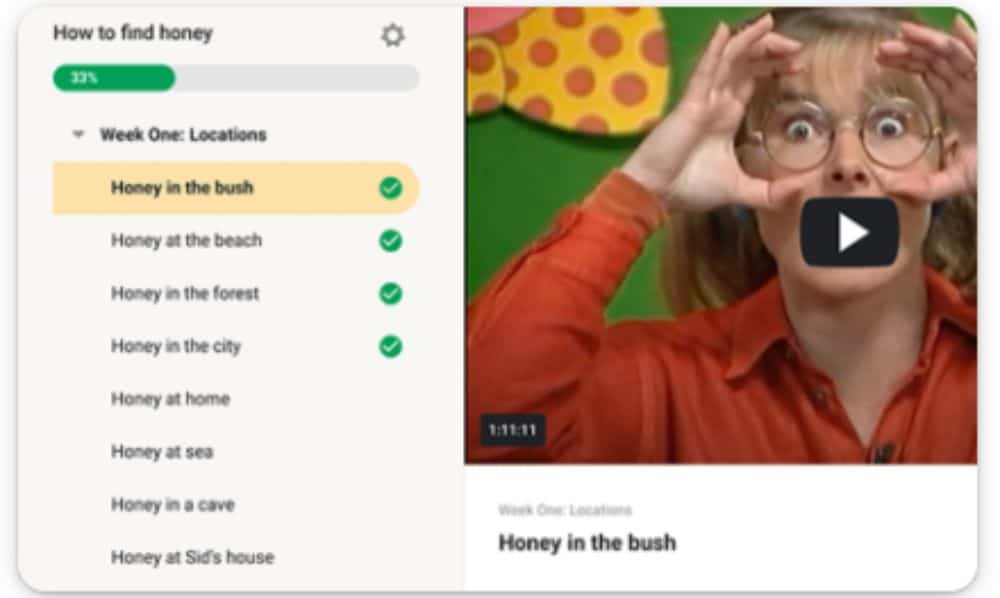
The classroom is a significant component of a Skool group.
This is the location where members can access and participate in your courses.
This is how it looks:
When adding multiple courses, members will need to choose which course they want to view when visiting the classroom tab:
There is no limit to the number of courses you can add to the classroom.
Setting up your course(s) is easy
To set up your course, you can easily add a new course through the classroom tab in just a few minutes.
Course access options:
- Every member has access.
- Access is limited to certain members.
- Members at a specific level are granted access.
You can determine the required level for members to unlock the course in the classroom, if access is granted to specific levels.
Next, you can utilize the inline/drag-and-drop editor to incorporate and arrange the modules in your course:
Each module has the capability to include:
- There is only one video.
- The video includes descriptions with linked timestamps.
- There are several links available.
- There exists multiple files.
- Here are the action items.
- Here is the transcript of the video content for improved searchability.
- The drip release feature can be enabled or disabled for each module to delay access.
Skool does not currently provide video hosting. To upload your videos, you can use platforms like YouTube, Vimeo, Wistia, Loom, or Bunny.net. Once your videos are uploaded, you can input the link when setting up a module.
Skool Classroom feature – In conclusion
Skool offers a course delivery platform with a sleek design through the Classroom feature.
The classroom is easily accessible for members to continue their personal learning process. The user interface is user-friendly and members can navigate without difficulty.
I have not received any inquiries from customers regarding the usage of the classroom.
That is a satisfactory indication.
For administrators, setting up courses is a straightforward process that only takes a few minutes. No external guides or tutorials are necessary, as the interface is highly intuitive.
There is a sufficient amount of flexibility to arrange your modules in various ways, including descriptions, timestamps, files, links, action items, and transcripts.
The layout cannot be edited, but in my opinion, the default layout is effective and does not require any changes.
Some people may consider it a drawback that they have to host their own videos. Personally, I don’t find it to be an issue, but I have noticed that other Skool users have asked about this feature multiple times.
If you want to use student testing tools to assess someone’s understanding of the material you’re teaching, such as a quiz, you will need to utilize a third-party tool like Typeform.
Student testing tools are currently not available in Skool.
Let’s now examine the calendar.
Feature #3 - The Calendar

The calendar feature is one of the main features of a Skool group and it is displayed in this format:
It is a platform that allows you to schedule online and offline events for all your organization’s participants to view.
The calendar tab will not be visible if no events are added to your group.
Scheduling an event is a straightforward process that closely resembles using Google calendar:
Participants can enter a title for their event and select the date, time, duration, and timezone.
An option is to send your members an email 24 hours before the calendar event, which has been proven to effectively increase attendance rates.
Please note that a tool such as Zoom or Google Meets is required to host the meeting as Skool does not provide this service
The event time is automatically converted to the timezone of each member.
The issue of timezones has been resolved.
Members have the option to click on the event to view the description or add it to an external calendar such as Google, Apple, Outlook, Outlook.com, and Yahoo:
The upcoming event can also be found in the community tab:
By clicking on it, you will be directed to the event details.
Skool Calendar feature – In conclusion
The calendar feature is a valuable addition to the overall experience of Skool, despite its simplicity.
Members have the convenience of viewing and accessing upcoming events with just a few clicks.
Automatic timezone conversion provides instant clarity on event timings, regardless of your location in the world.
It is highly unlikely to forget about an event due to the presence of an email reminder, add to calendar feature, and notification in the community tab.
Admins can easily set up events with just a few clicks, resulting in a decrease in the number of questions about event details and access.
Additionally, show up rates are increased effortlessly through an email reminder and notification in the community tab.
Feature #4 - Gamification
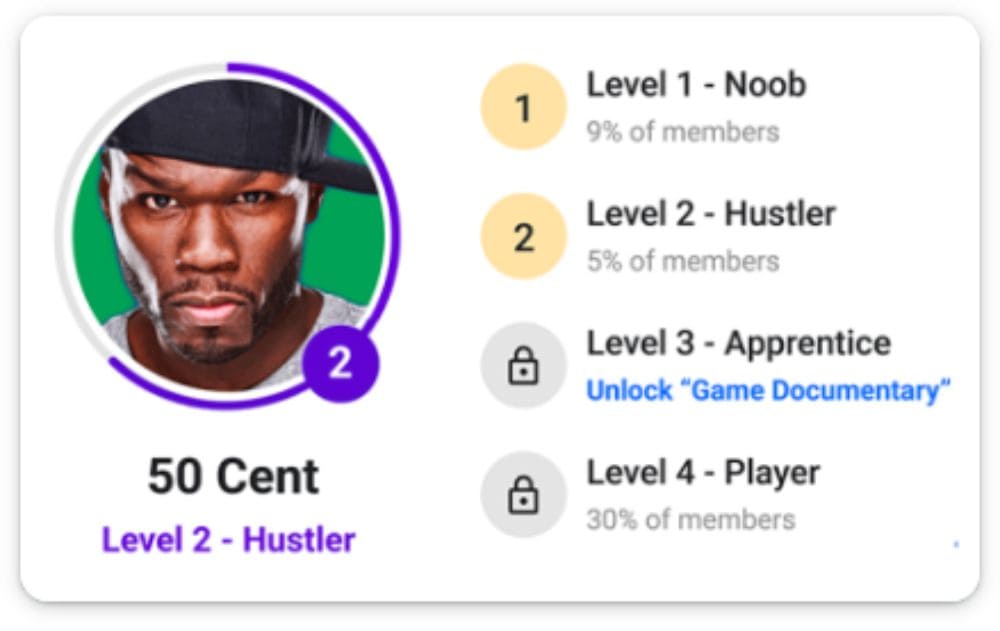
Now let’s discuss one of the interesting features, gamification.
Community members have the option to like posts or comments that they find valuable.
Likes are converted into points that are associated with a level that is connected to a user’s profile.
Once you reach a specific number of points, you will advance to the next level. There are a total of nine levels, and you also have the option to assign custom names to each level.
The leaderboards of your Skool group display the community members who have accumulated the highest number of points by adding value to the community:
As an administrator, rewards can be connected to each specific level.
Achieving level 6 in the displayed group screenshot provides entry to “Quantum Q3 (in-Person) 2022,” a recorded mastermind event.
After reaching level 6, the course will become accessible in the classroom tab of the corresponding group.
In addition to accessing content in the classroom, there is the option to choose any type of reward.
As an alternative, a 1-on-1 coaching call may be provided to the individual who achieves the highest ranking on the 30-day leaderboard each month.
Skool Gamification feature – In conclusion
Implementing rewards through gamification has proven to be very effective.
One effective method for increasing community engagement requires minimal effort on your part.
All community members are encouraged to participate and contribute to maximize their rewards.
The leaderboard tab displays your points, progress, and allows you to compare yourself with other members.
What is the best part?
In your community, members determine the value and contribute to a peaceful and balanced group. Posting spam for points is not allowed.
More Noteworthy Features
Charge money for membership to your community
Skool provides the opportunity to generate revenue through community membership.
Skool is a comprehensive platform that handles all aspects of your online business seamlessly, from your landing page to your order form and merchant account. All you need to do is add a price.
By forming a collective, it is possible to generate income.
At present, Skool exclusively offers a monthly membership fee and does not currently support one-time payments.
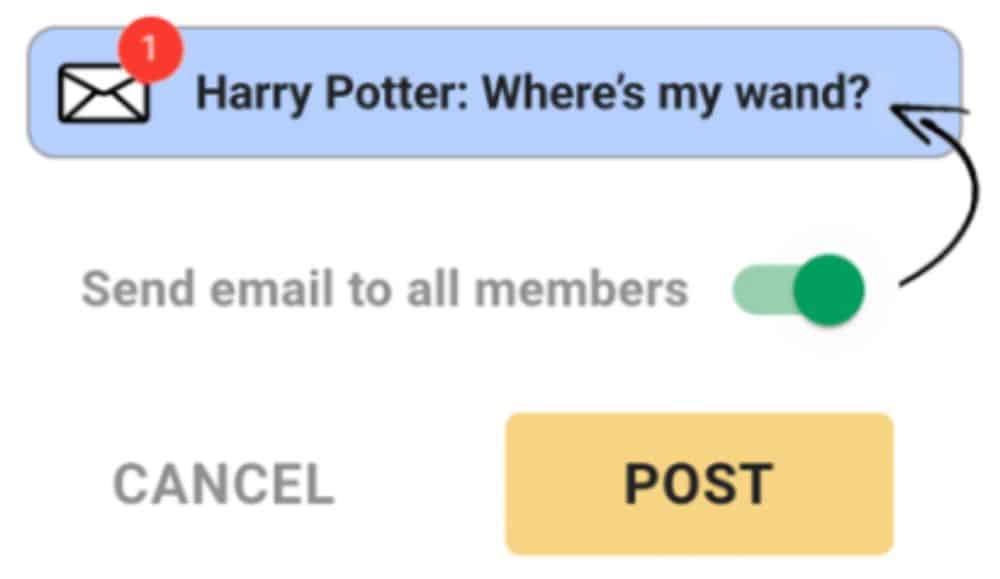
Send email broadcasts about your post (admin only)
As an admin, you have the option to send an email broadcast to all your Skool group members regarding your post. Please note that this action can only be performed once every 72 hours:
This is an example of the email that your members receive:
If you include images or other media in your post, they will also be displayed in the email.
The email deliverability is reliable, with no instances of emails going to the spam folder.
This feature allows you to inform your members about updates or promotions, eliminating the need for them to log in to view the post.
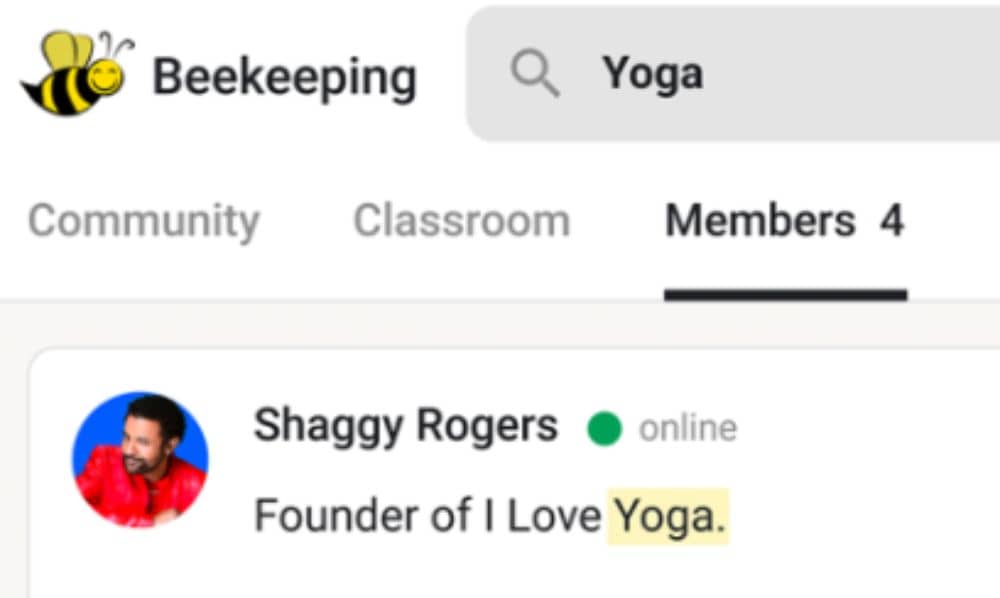
Skool’s single search box
Skool.com features a single search box for comprehensive searching:
- There are posts.
- Great comment.
- Content of course.
- Profiles of members.
Search results appear like this:
The tabs allow for switching between different types of search results.
The process is straightforward and effective.
Chat & Email notifications settings
Members have the ability to customize their chat availability and email preferences for notifications, including the frequency of those emails:
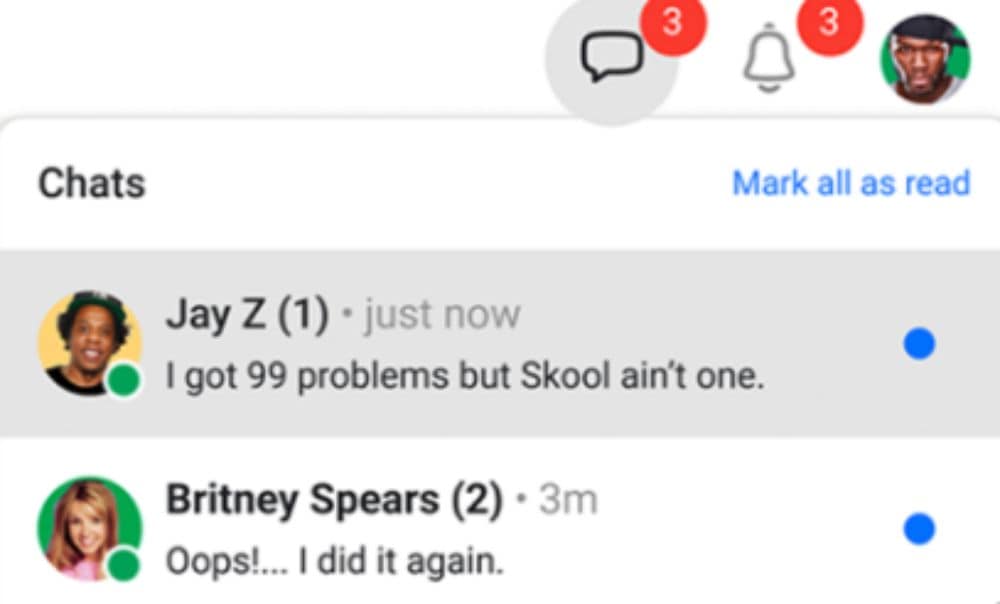
The timing of each type of notification can be adjusted, and they can also be completely disabled.
This feature is beneficial for members as it allows them to customize the platform’s functionality according to their preferences, enabling them to concentrate on their work without being overwhelmed by unwanted or excessive notifications.
For administrators, these notifications are effective in encouraging members to return to your group.
Group metrics (admin only)
As an administrator, you have access to valuable metrics:
- Number of members in total.
- There are individuals who frequently take part.
- Here is the daily schedule.
This provides insight into the performance of your group and areas for improvement.
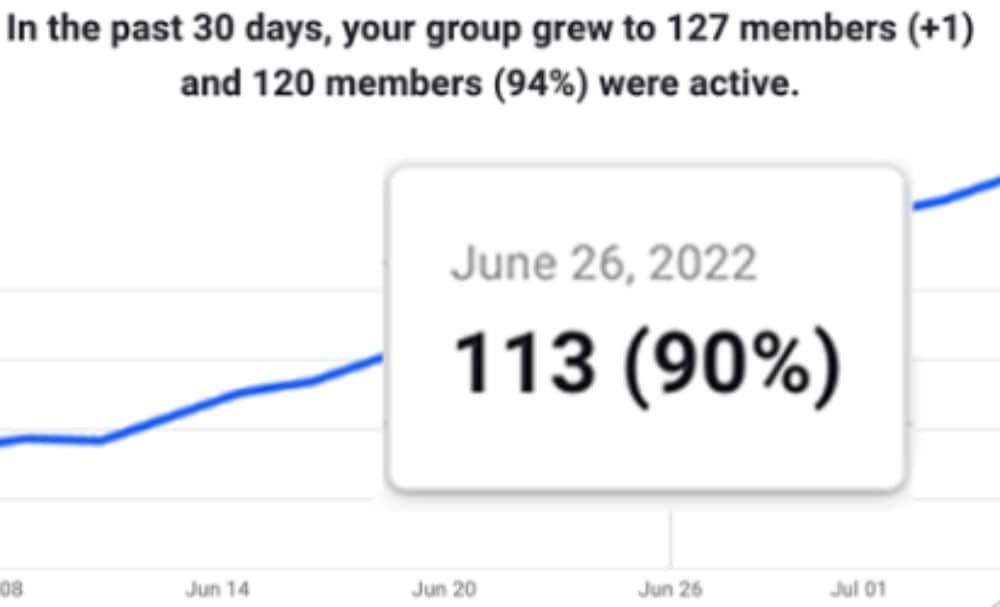
Public vs Private Skool groups
When creating your own Skool group, there is an option to choose between making your group public or private:
In a private group, access is limited to members, ensuring that their identities and posts are only viewable within the group. The content is not included in search engine results, making it appropriate for exclusive content such as paid courses and masterminds.
A public group allows for visibility of its members and their posts. The content can be indexed and discovered by search engines.
These strategies are effective for managing public communities related to your brand and products. They can also be utilized for lead generation, nurturing those leads, and ultimately converting them into your paid group.
To participate in a public group, individuals need to request access and wait for approval from an administrator.
Community members can invite friends to join
When running a public group, there is an option to either enable or disable members from inviting their friends to join:
This feature can be beneficial for those running a public group as it can effectively increase their following without requiring any additional effort.
Ask up to 3 questions when people request to join your group
When someone requests to join your group, you have the option to ask them up to three questions.
This can be helpful in gathering more information about potential members and potentially determining whether or not to accept them into your organization based on their responses.
Members have the option to ask up to 3 multiple choice or open-ended questions and are also able to provide their email address if desired.
Additionally, you have the option to send all answers to your CRM through Skool’s Zapier integration.
Welcome new members with an automated DM message
Skool offers the feature of setting up an automated direct message that is sent immediately upon someone joining your group.
This is a helpful guide for new group members, providing instructions on getting started in your community.
Skool mobile app for iOS and Android
Skool offers a mobile app that is compatible with both iOS and Android devices.
By installing the app, you will be able to receive push notifications regarding specific posts, depending on your notification settings.
Both apps are highly efficient and have fast performance.
What Skool (currently) Lacks
A one-time payments feature
The school has recently added a subscription billing feature, allowing them to collect a monthly fee from community members.
Currently, it is not possible to charge a single fee for community access. Additionally, Skool’s payment feature does not currently have the capability to support the sale of extra products, such as access to specific courses within the classroom.
To process one-time payments, the use of a third-party tool like Stripe, ThriveCart, or SamCart is required.
Luckily, Skool does integrate with Zapier:
With Zapier, you have the ability to seamlessly integrate your payment software with Skool. Once a payment is made, you can set up automatic actions:
- Please invite that person to join your group.
- Grant access to specific courses based on the purchase made.
Alternatively, you have the choice of not utilizing Zapier and instead offering an “invite link” to allow others to request access to your private or public group upon clicking.
You have the option to send this link either through an automated email after payment or manually.
Additionally, Skool’s webhook feature can be used to invite members automatically following payment.
Skool Pricing

The pricing for Skool is straightforward, just like the software itself.
There is a comprehensive plan available for $99 per month that includes everything.
It is important to note that this price is applicable per group.
To have multiple Skool groups, there is a monthly fee of $99 per group.
Skool offers a free 14-day trial through this link.
At the moment, there is not a free plan available.
Skool discount & special deals
At the moment, Skool.com does not have any discounts or special deals available.
If there are any updates, I will ensure to update this post as necessary.
Currently, the most advantageous offer is the free 14-day trial.
How to get your Skool group for free
Creating a Skool group requires a financial investment, however, Skool offers an auto affiliate system.
If a group is created from your group, you will receive a 40% commission for life, which amounts to $39 per month per group.
If three people form a group from yours, you will have recovered the monthly expense plus an additional $18.
Skool Customer Support
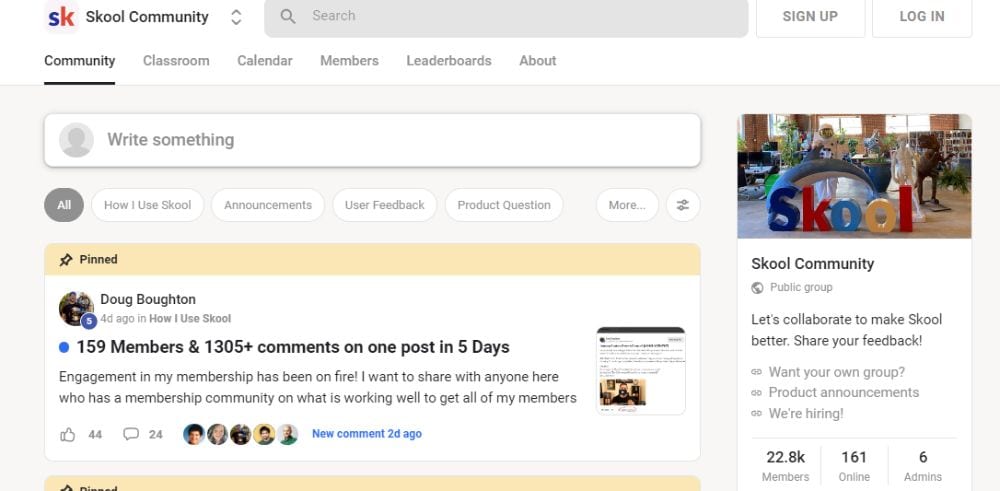
In my experience, I have not needed to seek support during my entire year of using Skool as the platform is easy to understand.
If you require assistance, you can reach out to the Skool team through email. They are known for their timely responses.
Users have the option to ask questions or engage in conversation with the Skool team within the public Skool community.
In the public community, you can expect to receive a response within a few hours from either the Skool team or other Skool users.
PROS:
- The platform offers community, courses, and a calendar.
- Impressive abilities for community building.
- The content is free of distractions and advertisements.
- There are unlimited courses and members available.
- There is a calendar feature available for both online and offline events.
- Events offer automatic time zone conversion.
- A monthly membership fee can be easily charged.
- The use of gamification can enhance community engagement.
- The user experience is excellent and the learning process is straightforward.
- A free trial is available.
- Zapier provides integration capabilities.
- The company provides excellent customer support and strategic guidance.
- The technical complexity is low.
- Features that are effective for member retention.
- A one-on-one conversation.
- The mobile app is available for both iOS and Android devices.
CONS:
- The built-in checkout only supports monthly subscriptions for now.
- No quizzes or assessments in the course.
- No group chat feature.
- You can use platforms like Youtube, Vimeo, Wistia, Loom, and Bunny.net for video hosting.
Conclusion: Is Skool worth it?
Skool is a user-friendly platform that combines community management, course management, and calendar functionality in one streamlined platform.
The learning curve for Skool is approximately 3 seconds for both members and admins.
This platform is designed to be accessible to all users, regardless of their level of technical skill.
When someone joins your Skool group, there will be no confusion about features or options appearing on the screen, which can negatively impact the overall experience of your members.
This also means Skool is highly suitable if you have a course or want to start a community for a target group that is not technically inclined.
Skool provides effective tools to help your group grow and keep members engaged, without bombarding them with excessive alerts, notifications, and emails.
Does Skool offer courses? One great feature of Skool is that it prioritizes community in the learning experience of its customers.
Courses that lack a sense of community may be perceived as dull and less engaging.
With Skool, customers may experience increased excitement, accountability, and motivation to continue working towards their goals as they become a part of a larger community.
Who wouldn’t desire a higher course completion rate and increased success for their customers?
The availability of community and direct chat enables individuals to assist one another in times of difficulty, rather than solely relying on you for support.
Is there anything else?
Gamification allows all community members to work towards a shared objective:
To maximize the value and access course material or any defined reward.
This can help your community grow more rapidly and become larger with minimal effort on your part.
We recommend trying Skool to see if it suits your preferences.





